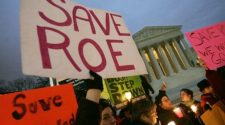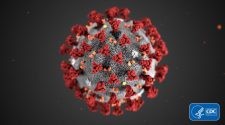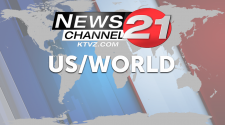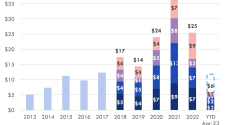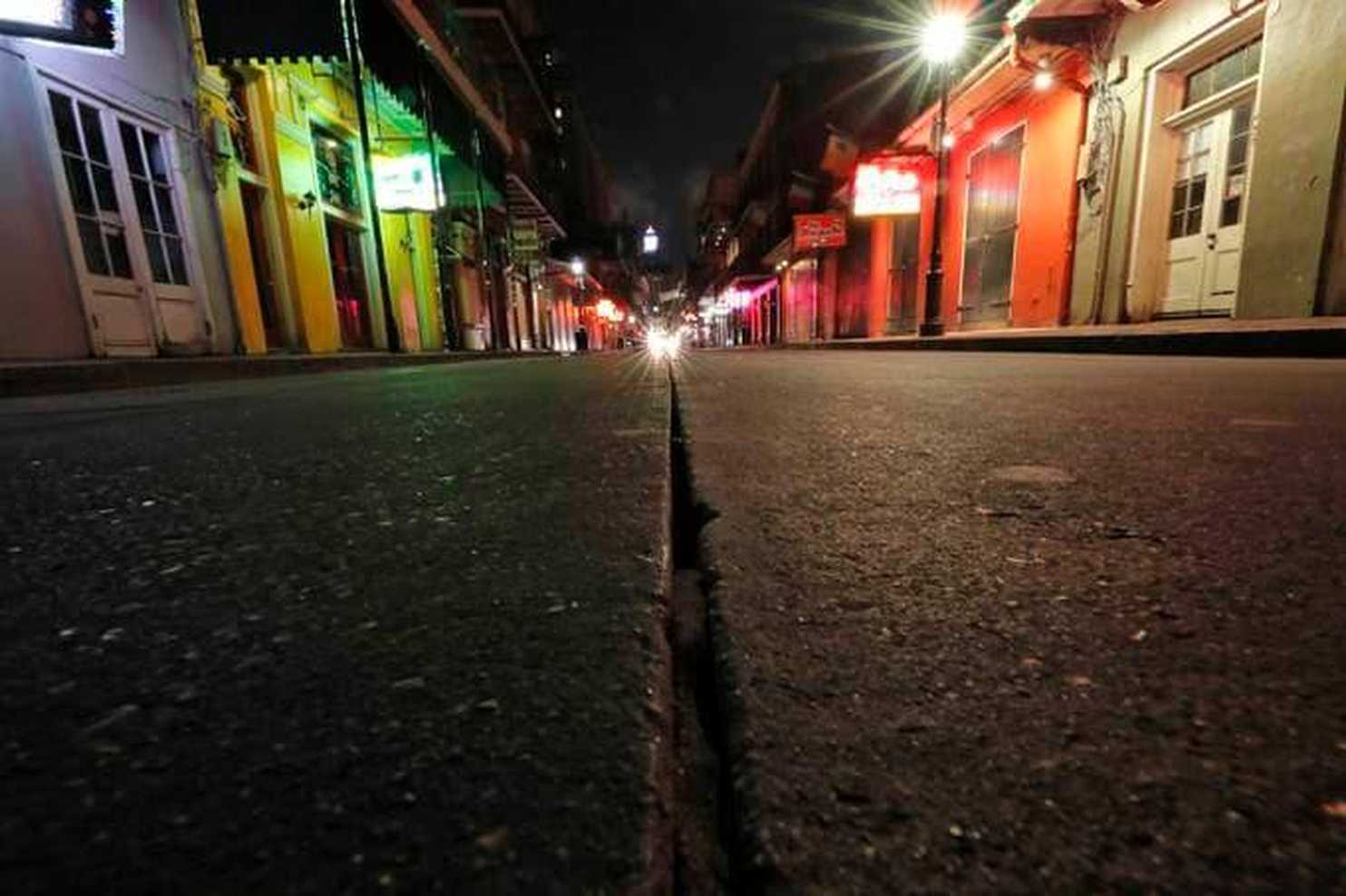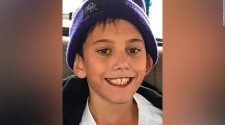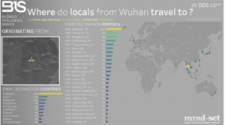THE PROGNOSIS
Deborah Birx, White House coronavirus response coordinator, speaks about the coronavirus in the James Brady Briefing Room on Thursday. (AP Photo/Alex Brandon)
New York City is clearly the nation’s covid-19 epicenter. Now the question is which U.S. cities may be next.
Whether a place will turn into a coronavirus hot spot depends on a variety of factors — including how state officials have responded to the pandemic. While nonessential businesses are now shuttered in most states, just 21 governors have issued enforceable orders for people stay in their homes except to buy food or medicine or exercise.
Smartphone data and polling indicate Americans have been taking social-distancing advice much more seriously over the past few weeks. But it won’t be clear for some weeks whether they’ve been taking it seriously enough.
The U.S. death toll is now more than 1,200 – mainly in New York City — and growing daily. That’s about 5 percent of all coronavirus-related deaths in the world. And the U.S. now leads all other countries in confirmed coronavirus cases, with more than 85,000 people known to have been infected with the virus.
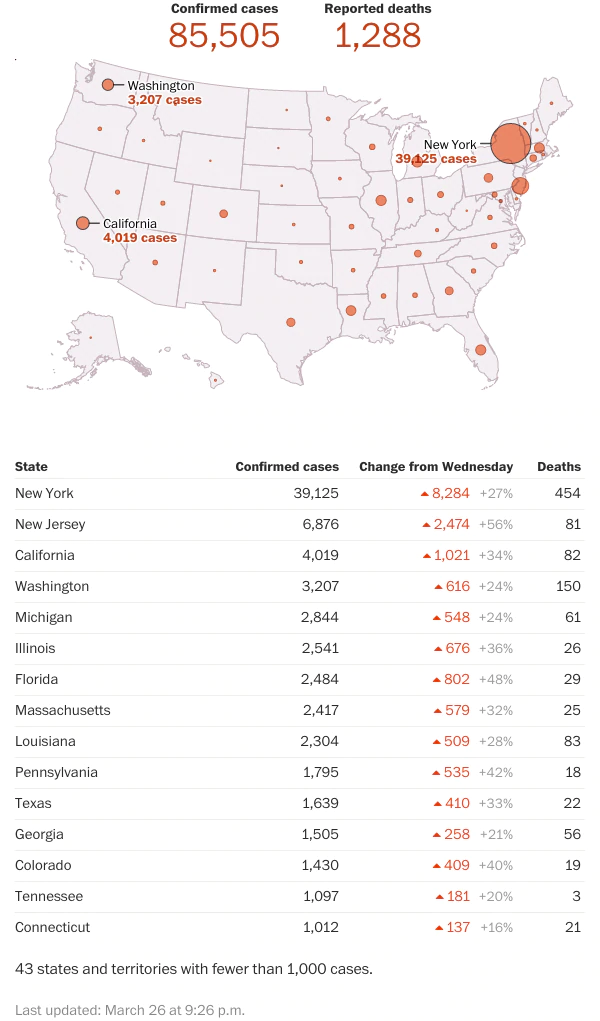
Deborah Birx, coordinator of the White House coronavirus team, says the federal government is tracking the spread closely. “We have integrated all of our information to not only look at where the cases are today, but how they’re moving so we can alert FEMA to where we think the next potential hot spot is,” Birx said at the White House’s coronavirus briefing yesterday.
Birx cited Chicago’s Cook County and Detroit’s Wayne County as two areas where cases are rising. “The hot spots are in urban areas or communities that serve that urban area,” she said. “And I think that’s something very important to remember as we move forward.”
Former FDA commissioner Scott Gottlieb:
I’m worried about emerging situations in New Orleans, Dallas, Atlanta, Miami, Detroit, Chicago, Philadelphia, among others. In China no province outside Hubei ever had more than 1,500 cases. In U.S. 11 states already hit that total. Our epidemic is likely to be national in scope. pic.twitter.com/jfN6YYRT07
— Scott Gottlieb, MD (@ScottGottliebMD) March 27, 2020
My Daily 202 colleague James Hohmann:
New York City EMS received 6,406 medical 911 calls yesterday. It was the highest volume ever recorded in the city, surpassing the record that had been set on Sept. 11, 2001.
— James Hohmann (@jameshohmann) March 27, 2020
Here are the hot spot cities to keep an eye on:
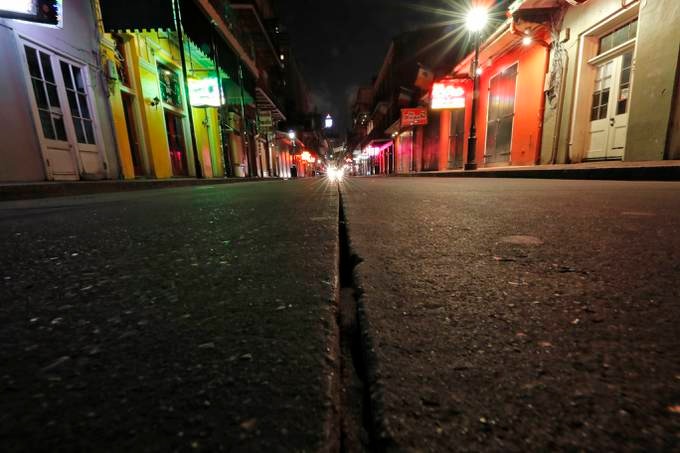
A view of the nearly deserted scene on Bourbon Street in the French Quarter of New Orleans. (Gerald Herbert/AP)
1. New Orleans, La.
Louisiana is experiencing the fastest growth in new cases anywhere in the world. The state reported 510 more known infections yesterday for a total of 2,305. Nearly half the cases – and more than half the deaths – are in New Orleans.
Officials are partially blaming the Mardi Gras celebration, which ran through Feb. 25 in New Orleans.
Gov. John Bel Edwards (D) warned at a news conference on Wednesday that Louisiana could run out of ventilators by the first week of April without additional assistance.
“We’re already low on protective equipment,” Rebekah Gee, who until recently served as Louisiana’s health secretary, told U.S. News and World Report. “The biggest issue is personnel, because you can make masks and you can actually create field hospitals, but you can’t make pulmonary critical care specialists in a week.”
Texas Gov. Greg Abbott (R) even included New Orleans in an order he issued yesterday, saying people who fly from that city or from New York City must self-quarantine for 14 days. He said violators could be fined up to $1,000 or spend up to 180 days in jail, or both.

An entrance to Comerica Park, home of the Detroit Tigers baseball team. (Carlos Osorio/AP)
2. Detroit, Mich.
Wayne County, which contains the city of Detroit, also ranks among the highest nationally in covid-19 cases per capita, the Detroit Free Press reports. Officials have reported nearly 1,400 cases and 26 deaths in the county and city combined. Health officials have stressed the inhabitants of the city, which is beset by economic disparities, are more vulnerable to the disease because of a higher rate of underlying health conditions.
“Part of what we’re seeing in Detroit is there’s such a high number of individuals who have those underlying conditions, who have the diabetes and the heart disease, who may have obesity,” said Joneigh Khaldun, chief medical officer for the Michigan Department of Health and Human Services, told the Free Press.
“And so what you’re seeing now is when you have really generations of concentrated poverty … that impact a place, a city like Detroit, when you have pandemics, it’s going to hit those places harder,” he said.
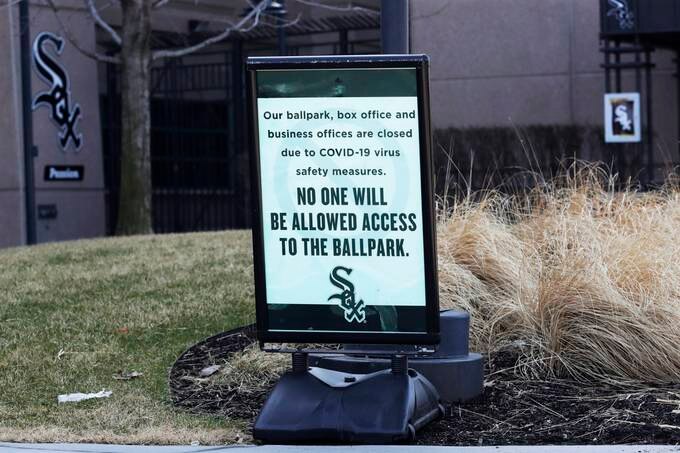
The Guaranteed Rate Field, home of the Chicago White Sox in Chicago. (AP Photo/Nam Y. Huh)
3. Chicago, Illinois
Health officials announced 673 new known cases yesterday, bringing the statewide total to 2,538 cases, the Chicago Tribune reports. The same day, Chicago Mayor Lori Lightfoot ordered many trails and parks to close.

(John Amis/EPA-EFE/Shutterstock)
4. Atlanta, Ga.
Georgia’s cases have increased 472 percent in one week, The Atlanta Journal Constitution reports.There are more than 1,600 cases and 56 deaths.
Gov. Brian Kemp (R) has ordered school closures until at least April 24, and the closure of bars and restaurants, but hasn’t imposed a statewide ban on other business activity.
Carlos del Rio, a medicine professor at Emory University, has said Atlanta could be weeks away from the situation in New York City.
“I think we’re going to be there probably early May, about a month,” del Rio said.

Interstate 5 in Gorman, Calif. (Mark J. Terrill/AP)
5. Los Angeles, Calif.
The city — and its neighbor, San Francisco — were among the first areas to enact strict stay-at-home measures. But Los Angeles Mayor Eric Garcetti (D) says the worst days “are still ahead.”
“We’ve taken actions earlier and swifter [than other cities], but no one is immune from this virus,” Garcetti said.
Covid-19 cases are doubling every three to four days. Los Angeles County reported 421 more cases yesterday for a total of 1,229 cases, the Los Angeles Times reports.
Economics professor Benjamin Hansen:
In today’s #SARSCOV2 figures, check Los Angeles traffic accidents. They’ve fallen by over 90 percent. People in LA staying at home. pic.twitter.com/J4AgyLYWYe
— Benjamin Hansen (@benconomics) March 26, 2020
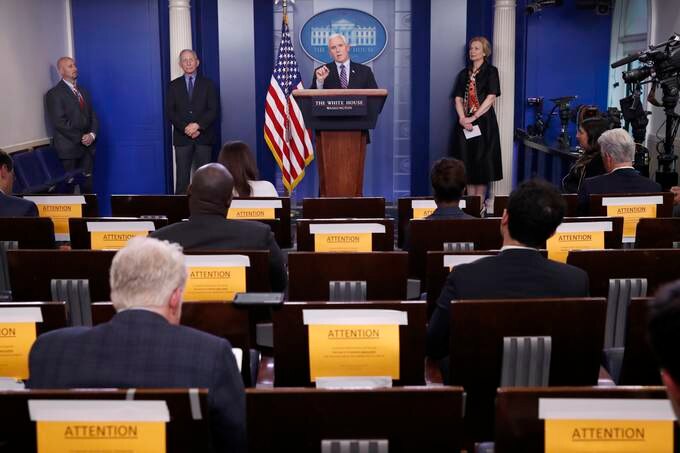
Vice President Mike Pence speaks about the coronavirus. (AP Photo/Alex Brandon)
State governors are feeling growing tensions with Trump over when to loosen social distancing measures to help the economy recover.
The president insisted yesterday that Americans are eager to “go back to work” and advised the governors in a letter that his administration is developing new guidelines that will categorize the risk level for each county in the nation – perhaps allowing less-affected areas to relax some of the strictest measures, my Post colleagues report.
“But the president’s upbeat assessment conflicts with warnings from public health experts that abandoning current restrictions too soon could be potentially catastrophic,” my colleagues write. “And his posture has distressed the leaders in states where the virus is spreading exponentially — overwhelming hospitals, exhausting medical supply stockpiles and ravaging communities.”
AHH, OOF and OUCH

Medical personnel are silhouetted against a tent before the start of coronavirus testing outside of Raymond James Stadium early Wednesday in Tampa. (Chris O’Meara/AP)
AHH: U.S. deaths from the coronavirus have spiked from 20 less than three weeks ago to more than 1,200 now.
As of yesterday, Americans had died in 42 states and territories and the District of Columbia, our colleagues Abigail Hauslohner, Reis Thebault and Jacqueline Dupree report.
A Post analysis of data from health agencies and of details from victims’ families and friends reveals some patterns: “About 65 percent of people whose ages are known were older than 70 and nearly 40 percent were over 80, demonstrating that risk rises along with age. About 5 percent whose ages are known were in their 40s or younger, but many more in that age group have been sick enough to be hospitalized. Of those victims whose gender is known, nearly 60 percent were men.”
But the data are incomplete. State and local authorities are offering varying reports and the CDC has no real-time tracker for the coronavirus.

Medical personnel from BayCare test people for the coronavirus in the parking lot outside Raymond James Stadium in Tampa. (Chris O’Meara/AP)
OOF: A “negative” coronavirus test result doesn’t necessarily mean you’re not infected.
“The clamor for long-delayed coronavirus testing is teaching a basic lesson about how all medical tests work: No test is 100 percent accurate,” our Post colleague Carolyn Y. Johnson reports. “Some test results may incorrectly say that a person has a condition, but they don’t. That’s a false positive. Other tests may incorrectly say someone doesn’t have a condition, but they do. That’s a false negative, and for covid-19, the illness caused by the coronavirus, at this stage of the outbreak, experts are more worried about this type of inaccuracy.”
That’s in part because of how quickly tests for the novel virus were developed and doled out. There are also numerous tests out there. When the tests are given to patients, how the swab was taken and the stage of illness the person is in can make a difference. All of these factors and more can affect the interpretation of results, Carolyn adds.
— Let’s say you want to get a test in the District, Maryland or Virginia. How might that go?
First of all, don’t show up without a doctor’s note or one from a local or state health department. Doing so could “delay or prevent testing for first responders, health workers and people at a high risk for death from the virus, medical authorities warn,” our Post colleague Patricia Sullivan writes.
Once you do have a note, check here for information about drive-up or walk-up facilities in the area.

OUCH: There’s already devastating economic toll from the mandated lockdowns. In a single week, a staggering 3.3 million Americans applied for unemployment benefits, the Labor Department says.
“Last week saw the biggest jump in new jobless claims in history, surpassing the record of 695,000 set in 1982. Many economists say this is the beginning of a massive spike in unemployment that could result in over 40 million Americans losing their jobs by April,” our Post colleagues Heather Long and Alyssa Fowers report.
And the record number of Americans who applied for such benefits endured yet another obstacle: hours-long waits on the phone and crashing websites clogged by all the people needing help.
But even that record number may not tell the whole story: “A lot of workers are not allowed to apply for unemployment benefits, meaning the true number of layoffs so far due to the coronavirus is likely far higher than 3.3 million,” Heather and Alyssa point out.
— “What sets this downturn apart is how rapidly the virus — and the economic pain — have spread. It remains a wide-open question whether this will become a long-lasting slump or a short-lived flash recession,” Heather writes.
Quite the visual, via New York Times print planning editor Josh Crutchmer:
unemployment claims visualized in friday’s @nytimes print editions pic.twitter.com/V2lDilAeco
— Josh Crutchmer (@jcrutchmer) March 27, 2020
— Treasury Secretary Steven Mnuchin called the new unemployment figures “not relevant.”
“I just think these numbers right now are not relevant,” he said in an interview on CNBC. “Whether they’re bigger or smaller in the short term … the president is protecting these people.”
— It’s clear anxieties are high as a result of coronavirus-fueled layoffs and pay cuts.
A new Washington Post-ABC News poll found more than 9 in 10 American say they think the outbreak will lead to an economic recession. And more than 6 in 10 predict a downturn equal to or worse than last decade’s Great Recession.
“The nationwide survey conducted Sunday through Wednesday illustrates the stark damage the coronavirus outbreak has caused in only a few weeks to an economy in which Americans had expressed record-high optimism when it came to their personal finances,” our Post colleagues Scott Clement and Dan Balz report. “The job concerns were echoed Thursday in a Labor Department report that showed that 3.3 million people filed for unemployment benefits in the past week.”

Boxes of N95 protective masks at a New York state emergency operations incident command center during the coronavirus outbreak in New Rochelle. (Mike Segar/Reuters)
— As medical personnel across the country scramble to acquire enough supplies to treat patients, nearly 1.5 million expired N95 respirator masks sit in a government warehouse in Indiana, our colleague Nick Miroff reports.
Because they are past their expiration date, they have not been shipped out to health workers. “Department of Homeland Security officials had a conference call Wednesday to figure out what to do with the masks, which are part of the U.S. Customs and Border Protection’s emergency supplies,” Nick writes. “DHS officials decided to offer the respirators to the Transportation Security Administration, whose workforce has been clamoring for protective equipment.”
But the masks are not set to go to hospitals or to the Federal Emergency Management Agency.
The main risk with older masks is that the elastic bands can weaken, which would hinder masks from being properly sealed on someone’s face.
— Workers in a health-care union in California, meanwhile, said they may have tracked down a stockpile of 39 million N95 masks.
Dave Regan, president of the Service Employees International Union’s medical worker arm, said workers “dove into the deep end of the pool and started making calls.”
“Union workers found a company in Pennsylvania that supplies the masks, Regan said. The masks filter 95 percent of airborne particles,” our Post colleague Alex Horton writes. “…[I]t was unclear why the seller did not simply unload the stockpile in recent weeks, when supply chains nationwide have been strained. The supplier will sell masks directly to Kaiser Permanente, the state of California and others, Regan said.”

House Speaker Nancy Pelosi (D-Calif.) speaks at her weekly news conference on Capitol Hill. (Erik S. Lesser/EPA-EFE/Shutterstock)
— House leaders are optimistic about quick action to approve the $2 trillion relief package, but there’s still a procedural hurdle could cause a delay.
House Speaker Nancy Pelosi (D-Calif.) and Minority Leader Kevin McCarthy (R-Calif.) want to approve the measure with a voice vote today. A voice vote would not require all sitting members to return to Washington, our Post colleagues Mike DeBonis, Paul Kane and John Wagner report.
“But at least one lawmaker is considering upending the plans for swift passage,” they write. “Rep. Thomas Massie (R-Ky.) said Thursday that he opposed the bill, approved unanimously by the Senate on Wednesday, as it would add to the national debt. The libertarian lawmaker also is concerned that voting without a quorum present — the majority of the House chamber — would violate the Constitution. He said he has yet to decide whether to press the issue, which could delay a House vote until late Saturday or Sunday.”
At a news conference yesterday, Pelosi said she feels “certain that we will have a strong bipartisan vote” and did not address Massie’s concern.
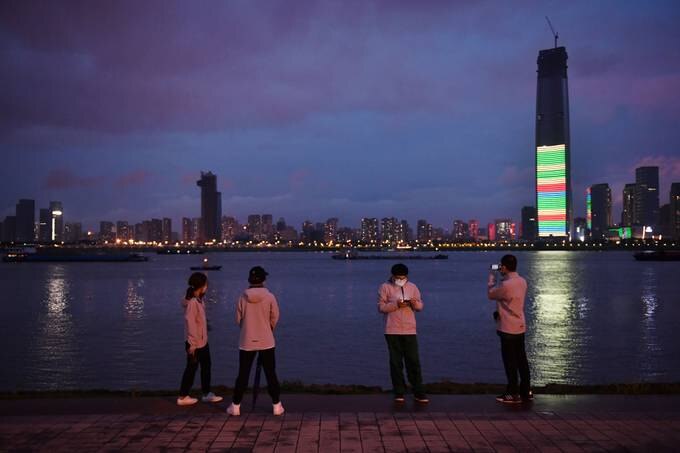
Medical workers from outside Wuhan are seen at a riverside park by the Yangtze River. (Reuters)
Some developments related to China, where the outbreak first started in late 2019:
— The Chinese Foreign Ministry announced China will temporarily suspend entry of foreign nationals with valid visas and residence permits.
“The coronavirus outbreak was first recorded in China late last year. In recent weeks, as the outbreak there appears to have slowed, China has expressed alarm over a reported uptick in cases being imported from people entering the country from abroad,” our Post colleague Siobhán O’Grady reports. “Chinese authorities have enforced 14-day quarantines on many people entering the country after international travel.”
— Before the outbreak, the Trump administration cut more than two-thirds of the CDC staff operating in China has part of a rollback of U.S-funded health and science experts in the country, Reuters’s Marisa Taylor reports. Most of the cuts were over the last two years and at the CDC’s Beijing office.
“The CDC’s China headcount has shrunk to around 14 staffers, down from approximately 47 people since President Donald Trump took office in January 2017, the documents show,” Marisa adds, citing four people who said the cuts included epidemiologists and other health professionals.
— Microbiology experts in Spain say rapid coronavirus tests purchased from China are only correctly identifying people with the novel virus 30 percent of the time, Bloomberg News’s Sinéad Baker and Ruqayyah Moynihan report, citing Spanish newspaper El País.
“Those sources told the newspaper that the tests should have a sensitivity of more than 80%. The US Centers for Disease Control and Prevention says rapid tests for influenza are required to have 80% sensitivity,” they add.
— More news this morning:
Good to know:
- Cases appear to be leveling off at the hospital in Kirkland, Wash., where the coronavirus outbreak surged weeks ago, our Post colleague Robert Klemko reports.
- You can calculate here how much you may get from stimulus payments (once the legislation has passed the House and been signed by the president, of course).
- Stephen Curry and Anthony Fauci chatted in a live question-and-answer session, our Post colleague Ava Wallace reports.
The Trump administration’s response:
- Trump will get recommendations from advisers this weekend about “next steps in the battle to stop the coronavirus and reignite the U.S. economy, Vice President Mike Pence said,” per Reuters’s Steve Holland and Jeff Mason.
- In New York, an unproven coronavirus treatment is being tested, spurred by political leaders including Trump, our Post colleague Christopher Rowland, Jon Swaine and Josh Dawsey report.
- A Trump administration policy meant to discourage immigrants from using social programs could mean many are not seeking medical care, which could worsen the spread, the Wall Street Journal’s Michelle Hackman reports.
On the front lines:
- Around the world, people are clapping their hands and honking their horns to applaud medical workers tackling the public health crisis, The Post’s William Booth, Karla Adam and Pamela Rolfe write.
The hardest hit:
- Expectant mothers are preparing for the prospect of having to give birth alone, our Post colleagues Brittany Shammas, Frances Stead Sellers and Ariana Eunjung Cha report.
- Yesterday was a day of grim milestones, writes The Post’s Brady Dennis.

